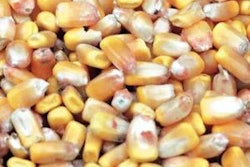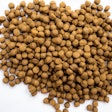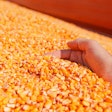
The U.S. Department of Agriculture has announced full deregulation of “Enogen,” a GM corn cultivar developed by Syngenta. The strain produces the enzyme amylase, enhancing production of ethanol.
It is claimed that for a 100-million gallon per year plant, water use will be reduced by 450 gallons per year and the gas fuel requirement by 244 billion BTU. The figures cited by Syngenta emphasize the immense diversion of resources including natural gas and water to produce ethanol in addition to reducing the quantity of corn available for feed and food.
In a related press report, Range Fuels has closed their cellulosic plant in Georgia. The previous Administration promised that corn-based ethanol would be a temporary expedient until cellulosic ethanol became a reality. The failure of this project, which absorbed $162 million in federal and regional funding and subsidies, illustrates the technical and economic restraints to the feasibility of converting wood products and waste to fuel.
Food cost
The World Bank Group President, Robert B. Zoellick, has implicated ethanol in raising commodity prices and thereby intensifying the poverty of up to 40 million inhabitants in developing countries. Food cost has risen to the previous high levels of 2008. In a statement to the World Bank Group preceding the G20 meeting of finance ministers in Paris, Zoellick confirmed that the food price index maintained by the Bank rose by 15% between October 2010 and January 2011. Corn prices are 73% higher while wheat prices doubled between June 2010 and January 2011. Sugar and edible oils have also increased in price at an alarming level.
The reasons for the increase include diversion of grains to biofuels, abnormal weather patterns associated with the transition from El Niño to a La Niña and an increase in demand from emerging middle classes in China and India.
Demand for corn
The increase in price of wheat is in large measure due to the escalation in cost of corn. Demand for corn increases in lock step with advancing oil prices since corn is the principal feedstock for ethanol and is displacing sugar as demand for this commodity increases. Almost 40% of the U.S. corn crop for the 2011 season will be diverted to ethanol production affecting both domestic and international prices.
The Chief Executive Officer of Growth Energy, Tom Buis, in a recent statement optimistically forecast that “markets will eventually correct themselves and high corn prices will not stay around forever.” This view is not held by prominent agriculture economists who believe that a disparity between production and consumption is currently influencing corn and other commodity prices and does not reflect the situation in 2008.
The ingenuous statement by Buis that “people miss the point that ethanol is produced out of #2 yellow corn who’s primary purpose is for animal feed” ignores the reality that corn is an important component of cost in the production of all livestock. An increase in the cost of feed must be reflected in an increase in cost of food to consumers.
This results from either a direct pass through of cost or an escalation resulting from a reduction in supply in a competitive market as farmers are unable to recoup their expenses.
The second statement made by Buis that “most people are unaware that the very byproduct of ethanol production – dried distillers grains – goes back into the food cycle as high protein animal feed” is also misleading. If corn is subject to fermentation to produce ethanol, the energy content and hence nutritional value of the byproduct are reduced. The animal feed industry is using DDGS because it has to since 40% of the corn crop is diverted.
Ironically, the ethanol industry, which could not survive without extensive government support at taxpayers’ expense, is a victim of its own success as their feedstock hovers at $7.00 per bushel and ethanol demand and market value stagnate.

















